Disclosure: This article contains affiliate links. We may earn a commission from purchases at no extra cost to you, which helps our travel content.
The first time I stepped into Alishan's ancient forest, it felt like entering another dimension. After years of photographing North America's rugged landscapes from my truck cab windows, Taiwan's misty mountain forests hit different. There's something almost supernatural about the way light filters through 2,000-year-old cypress trees, how the mountain railways cut through dense fog, and the way stars pierce through the night sky above this elevated wonderland. Grab your camera gear and join me for a weekend adventure capturing one of Asia's most photogenic forests.
Chasing the Sea of Clouds: Dawn Patrol in Alishan
Most folks will tell you Alishan's famous 'sea of clouds' is all about luck. After three visits, I've learned it's more about strategy and stubbornness. The sweet spot is arriving at the Zhushan (Bamboo Mountain) viewing platform about 40 minutes before official sunrise time. This means a 4:00 AM wake-up call during spring – brutal, but worth every yawn.
The forest railway that once hauled massive cypress logs now ferries sleepy photographers to prime viewing spots, but here's my trucker wisdom: skip the train crowds and hike up instead. The 30-minute pre-dawn walk through the silent, mist-shrouded forest is half the experience. The path is well-marked with subtle lighting that won't ruin your night vision.
When setting up, look for foreground elements – gnarled tree silhouettes work magic against the golden horizon. And don't pack up right after sunrise! The light play continues for a good hour as mist shifts through the valleys below. I've captured some of my best shots during this 'golden aftermath' when most tourists have already headed to breakfast.
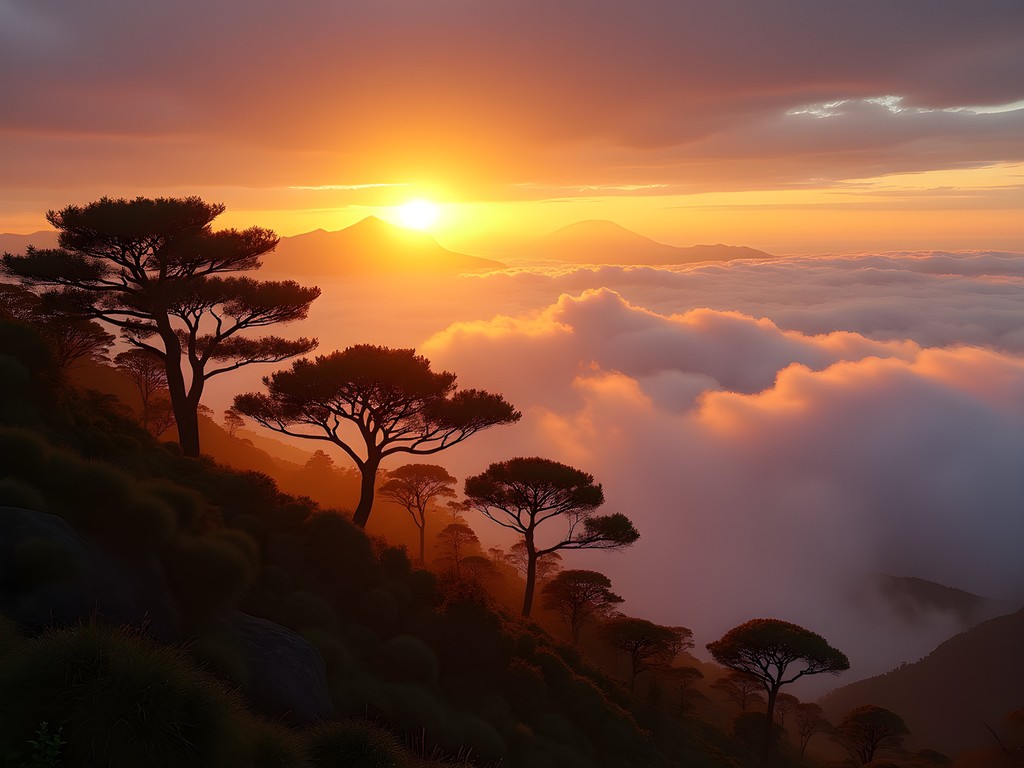
💡 Pro Tips
- Arrive at viewing platforms 40-45 minutes before official sunrise time
- Bring a headlamp with red light mode to preserve night vision
- Pack hand warmers – spring mornings at 2,200m elevation are surprisingly cold
Ancient Forest Trails: Midday Magic in Dappled Light
Most photographers pack it in after sunrise, but Alishan's photographic treasures are just getting started. Once the morning crowds thin out, the forest trails transform into a playground of light and shadow. The Sister Ponds trail is my go-to midday spot – these mirror-like pools reflect the towering cypress trees in ways that make even a rookie photographer look like a pro.
For forest photography in Alishan, I've learned to ditch the wide angle lens that served me so well in the American Southwest. Here, a medium telephoto creates the compression that truly captures the layered mystery of these woods. My variable ND filter has been invaluable for those longer exposures that smooth out water surfaces and create that dreamy forest atmosphere.
The famous 'Three-Generation Tree' provides a natural history lesson and a stunning scale reference – this fallen giant continues to sprout new trees from its massive trunk. For the best shots, visit during light rain or just after – the moisture saturates the colors and creates a primeval atmosphere that's pure photography gold.
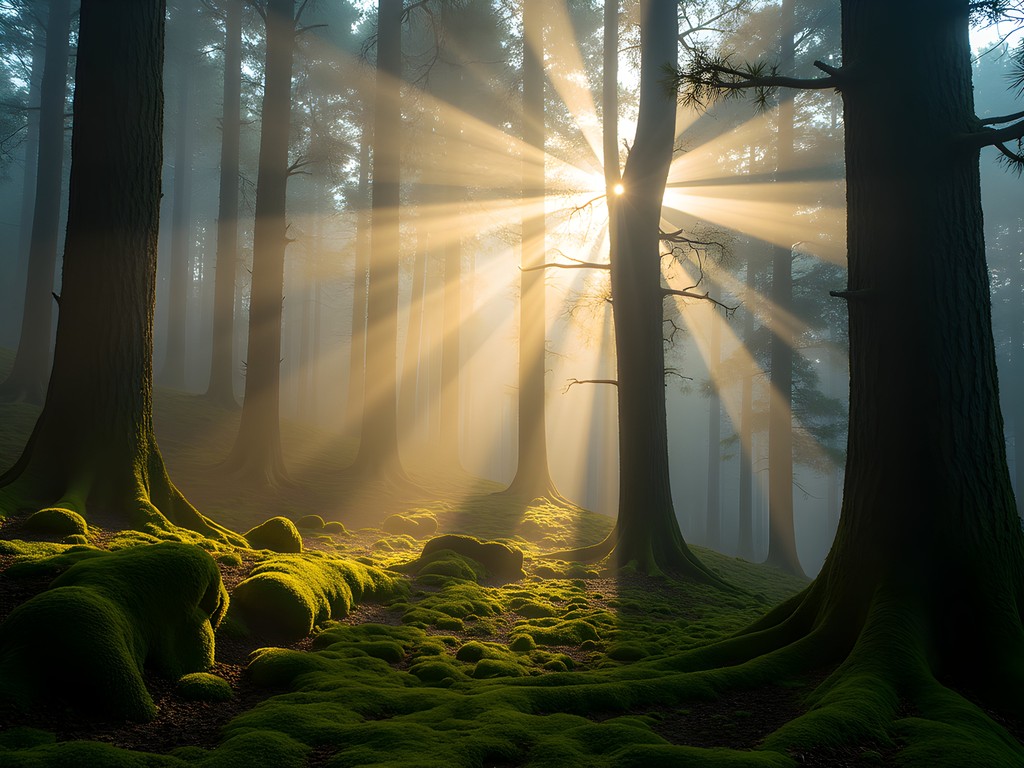
💡 Pro Tips
- Shoot in forest clearings where light beams penetrate the canopy
- Use a mist spray bottle to enhance light rays in your shots
- Look for natural frames created by arching tree branches
Railway Dreams: Capturing Alishan's Historic Forest Line
After years of photographing America's freight trains from my rig, Alishan's narrow-gauge forest railway feels like stepping into a storybook. This century-old mountain line, originally built by the Japanese for logging operations, now winds through some of the most photogenic terrain I've encountered.
The Alishan Forest Railway makes several stops that are photographer's gold mines. Zhaoping Station, surrounded by cherry blossoms in spring, offers that perfect juxtaposition of vintage trains against delicate pink blooms. For the classic shot of the train emerging from mist, stake out a spot near Duigaoyue Station around 8:30 AM when morning fog is still clinging to the tracks.
My secret weapon for these shots is my remote shutter release – it lets me set up multiple angles and trigger the camera the moment the train rounds the bend. For that vintage postcard look that matches the railway's heritage, I've been experimenting with the lens filters to add subtle warmth and character to the images.
Don't just shoot the trains – the stations themselves are time capsules with weathered wooden platforms and vintage signage that tell the story of this historic mountain line.
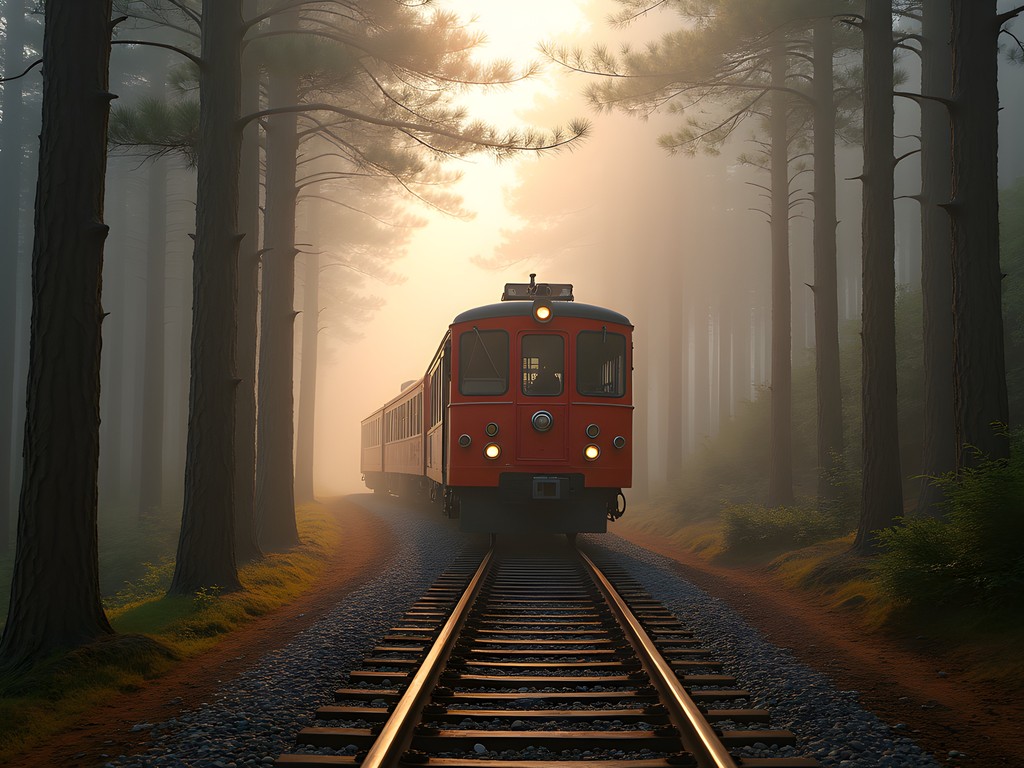
💡 Pro Tips
- Research train schedules in advance – they're limited and often packed with tourists
- Include human elements for scale and story – the elderly conductor in his uniform adds authentic character
- Try both motion blur (slow shutter) and freeze-frame techniques for variety
After Dark: Astrophotography in Taiwan's Clearest Skies
After spending countless nights parked in remote truck stops across America's heartland, I've developed a deep appreciation for pristine night skies. Alishan, sitting at 2,200 meters above sea level with minimal light pollution, offers some of East Asia's best stargazing opportunities – a fact surprisingly overlooked by many visitors.
The Zhushan viewing area transforms after dark from a sunrise hotspot to an astronomical observatory. On clear spring nights, the Milky Way core rises dramatically over the mountain silhouettes around 2-3 AM. I've found that bringing a foldable camping chair makes those long night exposures much more comfortable than standing or sitting on cold ground.
For those new to night photography, Alishan is surprisingly forgiving. The distant lights from villages in the valley provide subtle illumination on the foreground trees without overwhelming the stars. My red flashlight has been essential for adjusting camera settings without ruining my night vision or disturbing fellow photographers.
Don't forget to look for unique foreground elements – the twisted shapes of ancient cypress trees create dramatic silhouettes against the starry backdrop. And always pack extra batteries; night photography in Alishan's cool mountain air drains them faster than you'd expect.

💡 Pro Tips
- Use the PhotoPills app to plan your Milky Way shots based on precise rise times
- Bring a emergency bivvy to stay warm during long night shoots
- Focus manually on a bright star or distant light before starting your night session
Practical Gear for Alishan's Challenging Conditions
After years hauling freight through every weather condition imaginable, I've learned to respect Mother Nature's mood swings. Alishan's microclimate demands similar respect from photographers. In a single spring day, you might encounter pre-dawn frost, midday sunshine, afternoon fog, and evening drizzle.
My essential kit for Alishan starts with a weather-resistant camera bag that's saved my gear during sudden mountain showers more times than I can count. Inside, I always pack a lens cleaning kit – the forest humidity creates condensation issues when moving between temperature zones.
Alishan's trails are well-maintained but can get slippery, especially around the ponds and after rain. My trekking poles provide stability when I'm carrying expensive camera gear on wet boardwalks. They've prevented more than one potential disaster.
Don't underestimate the temperature swing. Spring mornings can dip to near freezing at this elevation, while afternoons warm considerably. I layer up with a merino base layer that regulates temperature throughout these fluctuations without the bulk of traditional thermals. When you're hiking between photo locations with a full camera pack, this breathability is priceless.

💡 Pro Tips
- Pack a microfiber cloth to wipe fog and condensation from lenses
- Bring fingerless gloves for cold mornings that still allow camera operation
- Use silica gel packets in your camera bag to combat the forest humidity
Final Thoughts
Alishan reminds me why I first picked up a camera during those long-haul drives – to capture moments that feel almost too beautiful to be real. This forest has taught me patience; the perfect conditions rarely arrive on schedule, but when they do, they reward those who waited. Whether you're tracking the first light breaking over a sea of clouds, finding hidden compositions among ancient trees, or gazing up at stars that seem close enough to touch, Alishan offers endless photographic possibilities for those willing to rise early and stay late.
As with the best destinations I've photographed across continents, Alishan isn't just about the images you bring home. It's about the quiet moments between shots – the sound of bamboo creaking in mountain breezes, the taste of high-mountain oolong tea from local plantations, and conversations with elderly Taiwanese photographers who've been capturing this forest for decades. Come for the photographs, stay for the experience, and leave with both memory cards and mind full of Alishan's mystical beauty. Just remember to set that alarm clock – in photography as in life, the early bird gets the shot.
✨ Key Takeaways
- Plan for multiple days to increase your chances of perfect conditions
- The best photographic opportunities happen at edges of the day – sunrise and late night
- Move beyond the tourist hotspots to find unique compositions in the ancient forest
- Weather changes rapidly – prepare gear and clothing for four seasons in one day
📋 Practical Information
Best Time to Visit
March-May (spring) for cherry blossoms and clearest skies
Budget Estimate
$150-200 for weekend (including forest entry, accommodation, and food)
Recommended Duration
2-3 days minimum
Difficulty Level
Easy To Moderate (Some Early Mornings And Night Shooting)


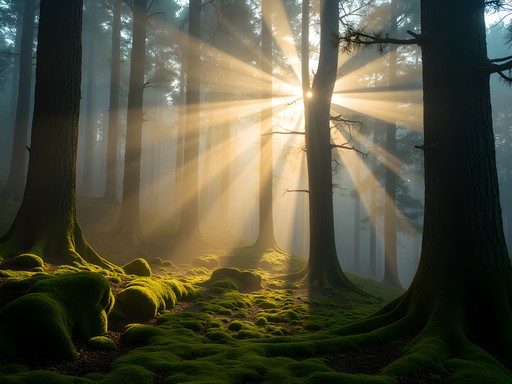
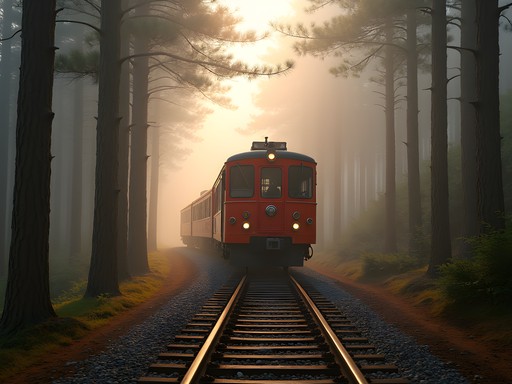










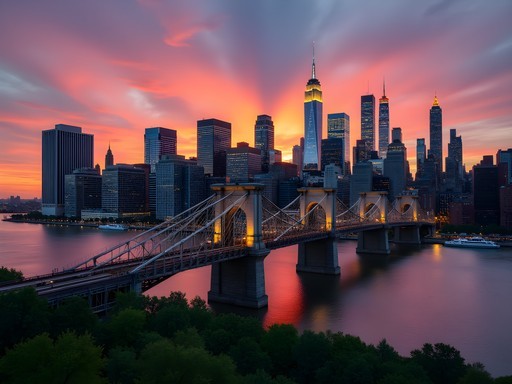

Comments
bluehero
Just booked my tickets after reading this!!! Can't wait to try capturing the sunrise shots. Nova, your transition from truck cab photography to these mystical forests is so inspiring! 📸✨
oceanvibes
Is it worth visiting during rainy season? Planning a trip in June.
winterrider
I went in June two years ago. It rained every afternoon but mornings were often clear. The mist after rain makes for amazing photos actually! Just bring good rain gear.
mountainexplorer
Just got back from Alishan last week and used this guide extensively - thank you! The tip about taking the earliest bus up from Chiayi was crucial. We stayed at the Alishan House which was pricey but worth it for the location. One thing to add: if you're going during Taiwan's summer holidays, book EVERYTHING way in advance. The forest railway tickets sold out weeks before our trip.
Frank Garcia
Fantastic breakdown of Alishan's photographic potential, Nova. I'd add that the seasonal variations are quite dramatic too. I visited in late October last year and the autumn colors created an entirely different mood than your spring/summer shots. The forest railway section is particularly helpful - many photographers underestimate how challenging it is to get clean shots of the trains given the crowds and limited vantage points. Your tip about the less-visited Zhaoping station is spot on. One question: did you encounter any issues with condensation on your gear when moving between the cool forest and warmer areas? That was my biggest technical challenge there.
Nova Harper
Great point about autumn, Frank! And yes, condensation was definitely an issue. I kept my gear in the backpack when transitioning between temperature zones and used silica gel packets. Also gave everything time to acclimate before taking it out. Still had to wipe lenses occasionally though!
journeyexplorer
What camera setup did you use for the night sky shots? They're incredible but I always struggle with astrophotography.
Nova Harper
I used a Sony A7III with the 16-35mm f/2.8 lens for most night shots. The key is a sturdy tripod and using the 500 rule for exposure time. My carbon fiber tripod was perfect since it's lightweight but super stable even in the occasional mountain breeze.
journeyexplorer
Thanks! I've been looking for a good travel tripod that won't weigh me down. Will check that one out!
winterrider
WOWWW!! I've been to Alishan twice but never managed to catch that perfect sea of clouds moment. Your timing tips are gold! Going back next spring and definitely trying the Zhushan viewing point at your recommended time. Those photos are INSANE!! 🤩📸
Savannah Walker
Nova, this guide is exactly what I needed! I'm heading to Taiwan in September and Alishan was already on my list, but I wasn't sure how to approach it as a photographer. I love how you broke down the different lighting conditions throughout the day. That shot of the train emerging from the mist is magical! Did you find three days enough, or would you recommend staying longer? I'm trying to balance Alishan with Taroko Gorge and a few days in Taipei.
Nova Harper
Thanks Savannah! Three days was good, but I wish I'd had four - especially for more sunrise attempts since weather can be unpredictable. If you're serious about photography, the extra day is worth it. Taroko deserves at least two full days as well!
Savannah Walker
That's super helpful, Nova. I'll see if I can extend my Alishan stay to four days. Better to do fewer places well than rush through everything!
skyguide5674
Those sea of clouds shots are absolutely breathtaking! Alishan just moved to the top of my photography bucket list.
Marco Flores
Nova, your post captures exactly what makes Alishan so special! After hiking through rainforests in South America and misty mountains in Japan, I thought I'd seen it all - but there's something truly otherworldly about Alishan's cypress forests. The way the narrow-gauge train winds through those massive trees... pure magic! For anyone planning a visit, I'd add that staying 2 nights is ideal. The first morning I was too disoriented to get the sunrise shots I wanted, but day two was perfect once I knew the layout. Also, the Alishan bento boxes sold at the train station make for perfect photographer fuel - I'd grab one before heading out for sunset shoots!
skybackpacker
Those bento boxes saved me too! And agree on the 2-night minimum. We did 3 and it was perfect - no rushing.
islandwalker
Going there next week! So excited after seeing these photos!
summerclimber
You're gonna love it! Don't forget layers - it gets cold up there in the mornings!
Venture X
Premium card with 2X miles, $300 travel credit, Priority Pass